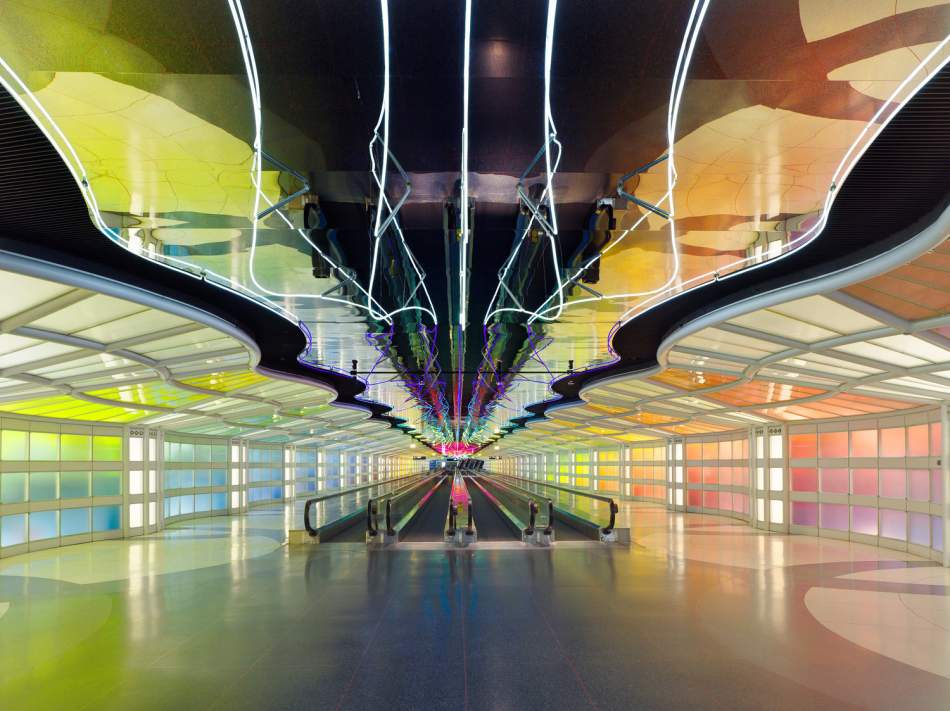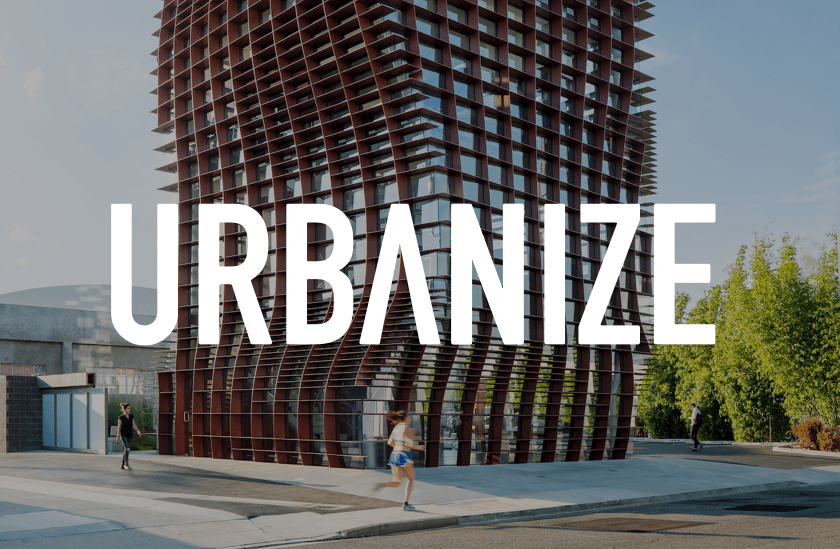On Sunday, Chicago and the world lost one of its architectural greats. Helmut Jahn, a titan of postmodern design and larger-than-life personality, was tragically killed Saturday in a cycling crash near suburban St. Charles. The architect was 81 years old.
It's impossible to tell Helmut Jahn's story without Chicago. Born in Germany in 1940, Helmut Jahn graduated from the Technische Hochschule in Munich and emigrated to the Windy City in 1966 to attend the Illinois Institute of Technology. Although he never graduated, Jahn did return to IIT in 2003 to design a dormitory building on the school's near south side campus.
Helmut joined Chicago architecture firm C. F. Murphy and Associates in 1967 and rose to the position of executive vice president and director of planning and design. Jahn took over the company in 1981 and renamed it Murphy/Jahn. The firm, which maintains offices in the Loop's historic Jewelers Building, was rebranded as simply JAHN in 2012. The company also has offices in Shanghai and Berlin.
In the 1970s, Jahn joined up with the architectural "Chicago Seven," a countercultural cohort of local designers that rejected the rigid monotony of the International Style pioneered by Ludwig Mies van der Rohe and others. Although Jahn embraced the out-of-the-box attitude of his iconoclastic colleagues like Stanley Tigerman, Laurence Booth, and Thomas Beeby, his work could still trace its roots back to his old teacher and his uniquely Chicago brand of Modernism.
"Helmut was this dashing star of an architect," former Chicago Tribune architecture critic Blair Kamin recently told the newspaper. "He was on the cover of GQ. He was renowned as much for his persona as for his architecture, but his architecture was always exceptional. And, as time went on, he was regarded as less of a 'Flash Gordon' character and more of a modernist master."
 O'Hare's United Terminal tunnel.JAHN
O'Hare's United Terminal tunnel.JAHN
Jahn went on to leave his mark on cities across the globe and reshaped New York's skyline in the process. In Chicago, Jahn continued to showcase his versatility. He teamed up with architect Gene Summers to create the boxy low-slung, Mies van der Rohe-esque Lakeside Center at McCormick Place as well as the glassy domelike Joe and Rika Mansueto Library at the University of Chicago.
For international visitors, a first—and in many cases only—experience of Chicago occurs at O'Hare International Airport. Here, Jahn created an iconic mirrored neon-lined tunnel connecting the two concourses of the United Terminal. A Blue Line station with undulating glass-block walls backed by multicolor lighting serves as the airport's mass transit gateway. Even the concourse itself playfully evokes both the glass-topped train sheds of Victorian Europe and the inside of an airplane's wing, supported by rib-like structural spars.
 O'Hare International Airport's United Terminal.JAHN
O'Hare International Airport's United Terminal.JAHN
Architecture critic Paul Goldberger tweeted, "Shocked and saddened by the sudden death of Helmut Jahn, who was a pivotal figure in the evolution of Chicago modernism in the second half of the 20th century. His United terminal at O’Hare remains among the great airport buildings."
Jahn's biggest impact on the Chicago skyline—an 800-plus-foot residential tower called 1000M—remains a work in progress. The developers of the high-rise slated for 1000 S. Michigan Avenue were forced to pause foundation work during the pandemic, but they hope to soon restart construction by switching its condominium residences to easier-to-finance rental units.
"I am extremely saddened by the loss of Helmut Jahn who I have had the privilege of working with for the last 15 years on multiple projects," said Francis Greenburger in a statement to Urbanize Chicago on behalf of the development team for 1000 S. Michigan. "He was clearly one of the great architects of his time and has left his imprint and legacy around the world. My heartfelt sympathies and condolences to his wife and family. He will be greatly missed but we look forward to carrying his legacy forward with the completion of 1000M."
Jahn's hometown is also home to undoubtedly the biggest cliffhanger looming over the architect's impressive body of work: the fate of Chicago's threatened James R. Thompson Center. Completed in 1985 as the State of Illinois Building, the city block-sized structure was an audacious vision of what a government building could look like.
Resembling a salmon and baby blue-hued spaceship that touched down in the heart of the Loop, the James R. Thompson Center was always going to be a controversial building. The site's 17-story atrium evokes the grand gestures of traditional public spaces like 19th-century train stations.... or is a giant and inefficient waste of space, depending on who you ask.
 Chicago's threatened James R. Thompson Center.JAHN
Chicago's threatened James R. Thompson Center.JAHN
Stuck in an architectural no man's land between being too new to be considered "classic" and too dated to appeal to contemporary tastes, postmodernism buildings like the Thompson Center don't make an easy case for preservation. An estimated $300 million deferred maintenance bill certainly doesn't do the JRTC any favors either.
Last month, the State of Illinois officially put the building up for sale. A city ordinance to rezone the site at 100 W. Randolph to allow for the construction of a skyscraper as high as 100 stories is working its way through the City Council.
Will Helmut's unfortunate passing help efforts to save this unusual albeit neglected masterpiece? Only time will tell, but it's looking like a long shot. If there is a silver lining to this weekend's tragedy, it may be that Helmut Jahn won't be present to witness the Thompson Center's demise.
Rest in peace, Helmut Jahn.









